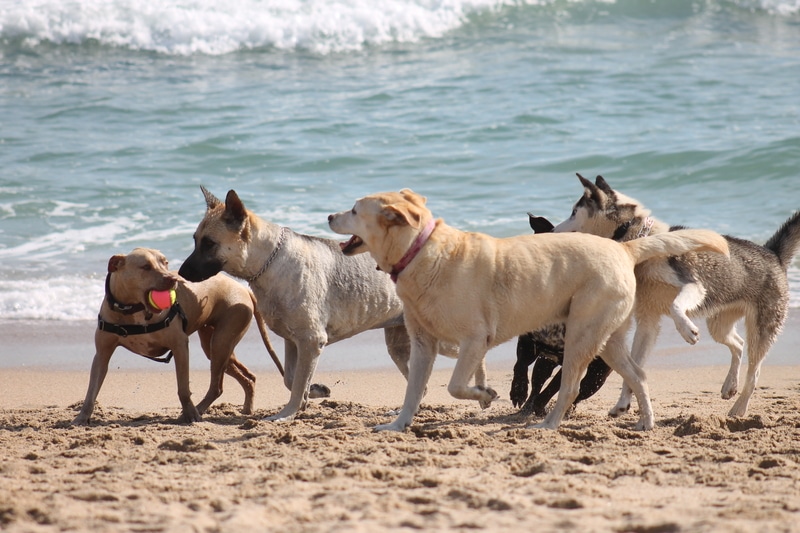

Our Guide to Socializing Different Dog Breeds
Household harmony is difficult enough with one pet. But when you combine different dog breeds with living under one roof, there are many ways social integration can go wrong.
Household harmony is difficult enough with one pet. But when you combine different dog breeds with living under one roof, there are many ways social integration can go wrong.
Interactions between small and large dogs depend on their individual personalities and how their owners have trained them. Small, sassy dogs may think they run the pack, no matter how much larger all the other dogs are. Big, friendly dogs often don’t know their size and may attempt to play with a smaller dog without understanding how they can hurt their little friends.
Read on for a comprehensive guide on introducing different dog breeds to each other, whether it’s for permanent residence in your home or for a social visit to the local dog park.
1. From a Distance
One of the best ways to introduce two dogs is to do it from a safe distance. You can keep both dogs in their own crates and set them side-by-side, or you can use a gate to separate their individual spaces. This way, they don’t have direct access to each other, but they can see, hear, and smell each other at all times.
This controlled interaction will give you a lot of insight into how both dogs react to each other’s presence and help you decide how to proceed. If both dogs remain staid and calm in their individual crates, you can advance to a one-on-one meeting. But if one is afraid or excitable, they likely need more time to get used to each other from a safe distance.
2. Start Small
The best time to socialize your first dog is within the first few weeks of bringing them home. After he or she has had all their immunizations, look for a friend or neighbor who has a dog that’s similar in size to yours. Set up several play dates and see how your dog reacts to other breeds. If they are perfectly comfortable and happy, you can start setting up playdates with gradually bigger breeds and check their comfort level. Slowly work your way up to socializing with the larger dog breeds in your area.
When introducing dogs to each other, always keep them on leash at the beginning. If you’re in public, allow them to sniff each other for several minutes before taking each of them on separate walks. After they finish doing their business, you can bring them back together for more socialization.
3. Be Generous with Treats
Socializing is just another type of dog training, so you ensure success when you integrate treats. When you provide treats for both dogs during every step of the transition, they’ll surely behave better if there are promised rewards on the other side. Demonstrate clearly that they will get rewards for good behavior and will be deprived if they start fighting.
4. Keep It Positive
Positive reinforcement is the only way to instill good behavior in your dog. When you yell at them or yank at their leash when they misbehave, it only causes fear and psychological damage, and they will never learn what you want them to. Dispensing treats and large amounts of praise will ensure that they will continue to follow all of your commands.
Conclusion
Dogs of different breeds have very different personalities and levels of socialization, so there’s no telling how they will behave when they are introduced to each other. It’s best to do it from a distance and gradually get them used to having another dog around. Give them treats and lots of praise when they behave well. Soon enough, your dogs will be playing together day in and day out!
The Pets People provides great dog training tips and practical, real-life advice that will help you take care of your pets. Our library of comprehensive content covers many different subjects and animals. Check out our content for more dog articles!
Discover how to create a joyful, healthy home for your pet.
Subscribe to your weekly rundown of practice, real life ideas and training tips straight to your inbox.


